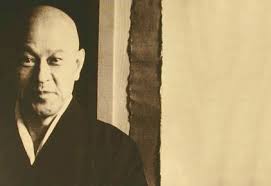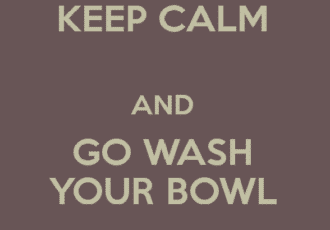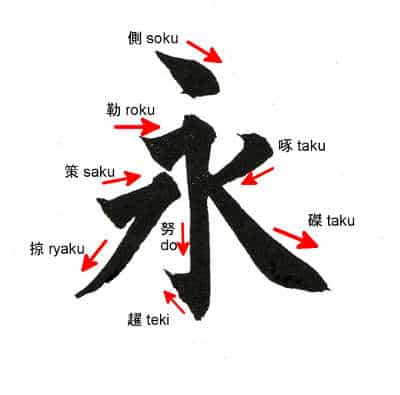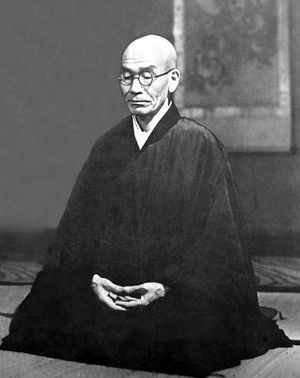Yvon Myoken Bec is a Soto Zen Master and the founding abbot of Mokusho Zen House in Hungary and Romania.
Just before his death in 1990, Master Mokusho Zeisler gave Yvon Myoken Bec the mission to create a dojo in Budapest – to spread the teachings of Master Deshimaru in Hungary, Zeisler’s country of origin, and in Eastern Europe.
Master Myoken started the Zen practice in 1974 in Paris, France. He followed the teachings of Master Deshimaru and Master Mokusho Zeisler for more than forty years. He himself has taught for almost twenty-five years. He built the foundation of Zen practice in Eastern Europe in 1992, where he founded many temples and communities (sangha) like those in Hungary, Romania, Croatia and Bulgaria.
He was born in Paris in 1949 and studied law and philosophy, receiving his MA degree at Sorbonne (University of Paris), having studied under Robert Misrahi. Master Myoken Bec also studied the piano, his main teachers being Georges Cziffra and Solchany Gyorgy.
Master Myoken was a disciple of both Taisen Deshimaru Roshi and Mokusho Zeissler Roshi (who sent him to Hungary).
In 2002, he received dharma transmission from Master Stéphane Kosen Thibaut, becoming the 85-th patriarch in the lineage of Buddha.
Master Myoken founded the Zeisler Foundation and the Mokusho Zen House, wearing the name of its spiritual founder. Mokusho Zen House has three affiliate temples, Hoboji in Hungary, Taisenji in Budapest and Mokushozenji in Bucharest, Romania.
He is giving the Dharma teaching on a daily basis, in Taisenji temple – Budapest, and he is regularly leading sesshins mainly in Taisenji or in Hoboji, a temple built in a forest, outside Budapest, but also abroad, in Bucharest and Zagreb.
He is the author of The “Pensee Girard” as a bridge between Buddhism and Christianism. He is involved in the “Pensee Girard” since many years and strives to introduce it in the different buddhist establishments (sanghas) he is in touch with.
Master Myoken carefully cultivated contacts in Europe with several spiritual leaders, including Zentatsu Baker Roshi, Suzuki Roshi’s heir, Fausto Taiten Guareschi, the abbot of Italy Fudenji Zen Temple, with Stéphane Kosen Thibaut and Barbara Kosen, Master Deshimaru’s greatest living disciples, and Lama Denys, Kalu Rinpoche’s successor in Europe. He is a member of the worldwide organisation, COVR (Colloquium on violence and religion), registered by Rene Girard.
If we take the example of the cup again, the cup we spoke at the beginning, we take it for granted that all of us see the same cup, but it’s not true. Each and every one of us sees the cup with his own eyes, from his own angle, and through his own way of thinking. Some may think that they are lucky to be able to eat lunch today … each day … for ezer (one thousand) forint, someone else may think that ezer forint is too little even for a lunch. Some are satisfied with százezer forint a month salary, others may complain: It is too little. (Pull the chin in! Don’t let the chin go up!)
Really everything is different, without exception, and each of us is living out his own, unique life. Some think this is a good world as it is, others ask themselves why they must live in such a terrible world, and even within a single person the feelings are always changing instant after instant. However, we usually think we see the same cup, which means we usually think we live in the same world – the one world outside, that we enter when we are born, and that we go out when we die. We think that we see the same cup, we think that we are spending money that has the same value, and we think that we are living together (as members) within the same world, but it’s only categories, it’s only ”realification” of abstract concepts. When we think how we should live, we mainly only consider how to spend our lifetime in this world we share, but it’s just a technique to live without trouble. And also each of us thinks of our own life, and each of us has a personal view of life. We only think about various techniques for social climbing. Only very few people really think of their own life as it is, a point which is very difficult to understand, but which is really essential … You have to hear it again and again and again before perhaps you begin to hear it … and finally, to understand it.
***
As I said at the beginning of each zazen: Take a strong posture! Strong posture means push the floor with the knees, push the fifth lumbar vertebra forward, stretch the back, pull the chin in, stretch the neck up and push the sky with the top of the head. Take care that the chin doesn’t go up. The ears are in same vertical with the shoulders. Zen education goes through the body. Zen is nothing to do with spirituality, its only the body. Kodo Sawaki said. He also used to said: „Zazen is good for nothing.”
You have to take a strong posture, pushing the floor with the knees, pushing the sky with the head, pushing equally the floor with the two knees. You have this stability and then you can really breathe deeply. If your knees don’t touch the floor, you cannot breathe deeply. Anyway the Buddha and all patriarchs all sat with the crossed legs.
We have even a famous story with a rinzai master who lived in the 17th century, or something like that. Who had a really knees problem. He could not sit in full lotus. Perhaps not even in half. In the moment of his death he said to his knees: In my all life you did what you wanted, but today will do what I want. He took his legs, sat in full lotus and he died. Blood spread in everywhere. It’s a very famous story, which is not something to take likely. Because it shows the determination of the practice. It should teach to you something. So long you don’t take seriously these stories – which means so long you don’t understand that it is your story, you will never enter the practice. Even if you practice for years, it will just be a hobby. It will not be the direction of your life. Is it not pitiful that you sit during ten or twenty years, and still you don’t understand a thing? Or that you still understand nothing? Proud to be an imbecile?
In Zen we have this expression ”to come back empty handed from the mountain of jewels”. Time flies like an arrow and opportunity is lost – we hear this every day, but we don’t care.
The story deals with the question of how we direct our life. „Pole is in his side, balance is in his hands.” It means we are totally responsible for our life. Ultimately nobody can help us. Surely not the Buddha. No external Buddha can help us. Nobody can live at our place, nobody can die at our place. At the end we have to take the decisions. „Able to kill, able to give life. Balance is in his hands” So the question also in the koan: What really happens in your life? The monks don’t know the depth of the mud under their feet. For example are you sure of at least one thing in your life?
That’s a good question to think about during this sesshin. Please stretch your back, pull the chin in, correct the weaknesses of your posture. Create the posture which allow the breathing to go freely to the bottom of your intestines.
***
Sometimes you can have the chance to … to feel that it’s really what I want to my whole life, so I will dare to organize my life in order to do it. Because it’s really the most important. I don’t see something which is more important. Many people … they … they don’t have this. A little bit … they go around the pot, as we say. Chi, chi, chi, chi, chi, chi, chi … And how to practice in the daily life … it’s important to practice in the daily life … it’s also, for example, to let pass the thoughts, to accept all the situations as teachings, to practice the Paramitas, to see the constant appearing and disappearing of the things. That’s the practice in the daily life. You can be in … in a … I think you can be in prison and practice, not only just to sit. Basically not to complicate your head with your problems. You have no problems and also you don’t have to justify your choices to nobody. Nobody can even fart at your place. It’s the absolute reality of your own life. And it is all … you have only one life..because there is no trasmigration and things like this. There is no other … You will not have another life. But this in not very buddhist …. N’est pas buddhisme. But, what is … what transmigrates.. is your karma. What remains later is just the consequences of what you are doing right now. Basically, it means: what example you will give to the people. What example you give to the world, how to live. It’s (exactly) what transmigrates, it’s the karma which transmigrates. It’s no self, it’s the consequences of our actions which continue. Alor, regarde … What are the people who are the most respected in the humankind, who stays since the memory of humankind forever and are respected? Christ, Buddha … this kind of people.
***
When I started to practice in the first month I was very enthusiastic, and I could speak hours of Zazen, and I knew exactly what it was. One day Zeisler was invited into a restaurant, his wife … his second wife met with a friend of her, which was a reporter guy … you know, the wife of Zeisler was the daughter of the former prime minister, an important person, but never mind, he belonged to this kind of wealthy society … like Dogen, by the way, like … Shakyamuni by the way, like Bodhidharma by the way, like Ikkyū by the way … but not like Eno, by the way … So this guy wanted to meet master Zeisler, and he asked in one moment: “What are you doing? What it is exactly?” Sensei said: Ööööö … Öööööö … unable to explain what’s going on. “Three and three behind, three and three in front.” The guy said: “It is a little but stupid … Your husband doesn’t even know, what he does.” Nevertheless, it’s only the half. Because there is Buddha and 40 Bodhisattva … no, Bodhisattva … you have to grasp the ungraspable, you have the express the inexpressible. To help the others. Dogen gives a very … when somebody asks you about the Way, just show all the aspects of your posture. If someone asks you, what is Zen, what you are doing? Don’t speak, just sit, just show how to sit. Take something which can help you as a zafu. A big book or something like that or a bag or a step of the staircase, the border of a pedestrian walk … I have this examples because I used all of them, in the street, in the staircase. And you cross the legs, you pull the chin in, you stretch the back, you push the sky with the head, you concentrate on the posture, you show the important points, long breathing out rooted in the low belly, and you let pass the thoughts. You let pass the thoughts with coming back instant after instant to the posture without expecting anything … mushotoku, without goal, without intention, without profit. It’s enough, but you have to do it. The best, of course, is if the people do it. Teaching in the dojo: you show the posture, you have the responsibility to … in the dojo if a beginner arrives … of course, first you have to take care … you stop to smoke, you leave your coffee for an instant, you don’t wait … you don’t wait the bell or that Zazen begins to show the posture. Don’t wait the Kinhin in order to explain the Kinhin. Sh-sh-sh-sh-sh-sh-sh-sh-sh-sh-sh … like a little mouse. But basically when you explain you don’t let the … the … the … the people stand in front of you and look what you are doing … he has to sit at the same time and you take care of the position of the hands, especially in Kinhin. You just show the posture. It’s enough. How to sit, how to breath, let pass the thoughts, mushotoku.
Dharma is included in these four points. It was … for one moment you … you have … you understand … you receive the totality of the teaching in the first instant you enter in the dojo. The true way they teach in Japan – in given the traditional way – is to give absolutely no explanation. They just show … they just show, without verbal explanation. If you make a mistake, they hit. So you understand very quickly. If they speak, they speak in Japanese. There is no translator. It’s called the deep teaching … goes deeply and slowly into the body.
kusens and photo credit: Mokusho Zen House




